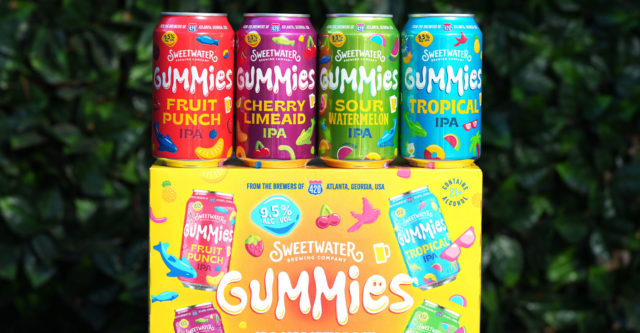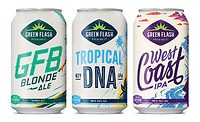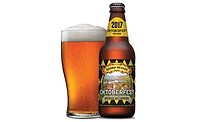Special Report
2024 Beer Report | Local brewers delivering stronger performance in craft beer
March 7, 2024
Special Report
2024 Beer Report | Local brewers delivering stronger performance in craft beer
March 7, 2024Image courtesy of SweetWater Brewing Co./Tilray Brands Inc.
When March Madness comes around, many of the lower seeded teams have hopes of becoming America’s Cinderella, like the 1985 Villanova Wildcats upsetting Georgetown Hoyas for the national title. In the craft beer market, analysts note that as the segment looks to recover, it is the regional players that are helping lift the category.
“The market declined around 1.5% in 2023,” says Brian Sudano, CEO and president of S&D Insights LLC, Norwalk, CT. “The market continues to evolve with best performing being strong local players versus more regional or national players.”
Top Craft Beers
Source: Circana, Chicago. Total U.S. multi-outlets (grocery, drug, mass merchandisers, convenience, military commissaries, and select club and dollar retail chains) for the 52 weeks ending Jan. 28, 2024.
For the 52 weeks ending Jan. 28 in total U.S. multi-outlets, Chicago-based Circana data shows dollar sales for craft beer were $4.7 billion, a decrease of 0.8%, while case sales were down 4%. Despite this decline, this is an improvement from what was reported in Beverage Industry’s 2023 Beer Report, which showed a dollar sales decrease of 4.7% and case sales down 8.6% for the 52 weeks ending Jan. 1, 2023.
As craft beer continues to make this turn, experts point to impacts of mergers and acquisitions (M&A), niche market players and flavor innovations as a way to help the segment recover its market share.
Ryan Toenies, client insights consultant for Circana; and Cara Piotrowski, client insights consultant for Circana, note that as craft beer was in decline, M&A activity was on the rise “as seen by Tilray acquisition of eight former ABI craft brands in 2023 and Kirin Holdings/Lion acquisitions of top craft brewers New Belgium and Bell’s in recent years.
Looking for a reprint of this article?
From high-res PDFs to custom plaques, order your copy today!
“New Belgium and Bell’s are top growth brand families in the craft segment, suggesting Kirin’s investment has been a net positive,” they continue. “However, consolidation of craft brewers will put pressure on brands to delivery growth or risk being delisted or discontinued.”
S&D Insights’ Sudano, however, notes that as some major brewers have shuttered their craft operations, focus is landing on independent operations.
“Although access to market may be hindered, the increase in focus from smaller players should help nurture brands that require more retail execution attention than national brands,” he says. “Over time this should be a net positive for craft beers in which consumption has become more local. In the short term, some lost distribution may provide a headwind for the category followed by benefit from greater focus on executing in the market by independent companies.”
Chicago-based NielsenIQ experts Jon Berg, vice president of BevAl Thought Leadership; and Kaleigh Theriault, director of BevAl Thought Leadership, meanwhile note consumers are less observant of M&A changes and remain brand centric. However, the thought leaders echo sentiments of the benefits that local brands and flavors will have on craft beer.
“Localization and regional brands have worked hard to find a niche and gain consumer loyalty,” they say. “New flavors in a rotation and with significant diversification (read as mixed multi packs) have been important to maintaining consumer appeal.”
Berg and Theriault elaborate that the flavor focus in ready-to-drink (RTD) segments have helped craft brewers embrace this opportunity ― though IPAs still dominant the segment.
“IPA has been a significant style leader, but flavors are driving a lot of the growth regardless of style type,” they say. “RTD and other categories have created a very flavor forward consumer in the U.S.”
Circana’s Toenies and Piotrowski also highlight the importance of IPAs on the craft beer segment, but also call attention to the importance of embracing new flavors.
“IPA is the primary driver of volume growth for craft, as well as the largest style within the segment (46% volume share),” they say. “Within IPAs, American IPAs grew nearly 2.5 million cases due to New Belgium’s Voodoo Ranger series.”
S&D Insights’ Sudano also calls attention to American IPAs impact, as well as Imperial IPAs due to their higher alcohol content and Hazy IPAs.
Toenies and Piotrowski add that “craft brewers are leaning into innovation that is flavor forward (e.g., Voodoo Ranger Juice Force Hazy Imperial IPA, Founders All Day IPA Variety Pack, Golden Road California Classics VP).”

SweetWater Brewing Co., a subsidiary of Tilray Brands Inc., recently combined flavor innovations with higher ABV content with the release of two additions to the SweetWater Gummies line of brews: Sour Watermelon India Pale Ale (IPA) and Cherry Limeaid IPA, which are both brewed with real fruit and clock in at 9.5% ABV.
Sour Watermelon IPA features a watermelon candy aroma, a crisp fruity body with a hint of tartness, and a slightly sweet finish, the company says. Cherry Limeaid IPA is a lime-forward profile, with a subtle maraschino cherry aroma, a sweet citrus body, and a hint of candy cherry flavor with a clean, sweet finish, the company adds.
Dogfish Head Craft Brewery, a division of The Boston Beer Co., also is adding more flavor to the craft beer market with its springtime brew Mandarin & Mango Crush (6.0% ABV), a citrus-forward fruit ale brewed with boatloads of tart mandarin oranges and juicy Alphonso mangos.
Part of Dogfish Head’s 2024 Art Series, an annual selection of four beers featuring designs by a singular collaborating artist, Mandarin & Mango Crush showcases label artwork by Methane Studios, an Atlanta-based operation made up of an Ohio-native, beer-loving duo, Mark McDevitt and Robert Lee. The team’s otherworldly interpretation of Mandarin & Mango Crush centers on a sea monster amidst shark-infested waters balancing whole oranges and mangos amongst his many tentacles, it says.
Going forward, consumers interest in flavorful innovations will continue to impact craft beer, experts note.
“Demand for sweeter, fruity, bolder flavor profiles across all of alcohol has influenced craft innovation and the brands that are driving segment growth,” Toenies and Piotrowski say.









